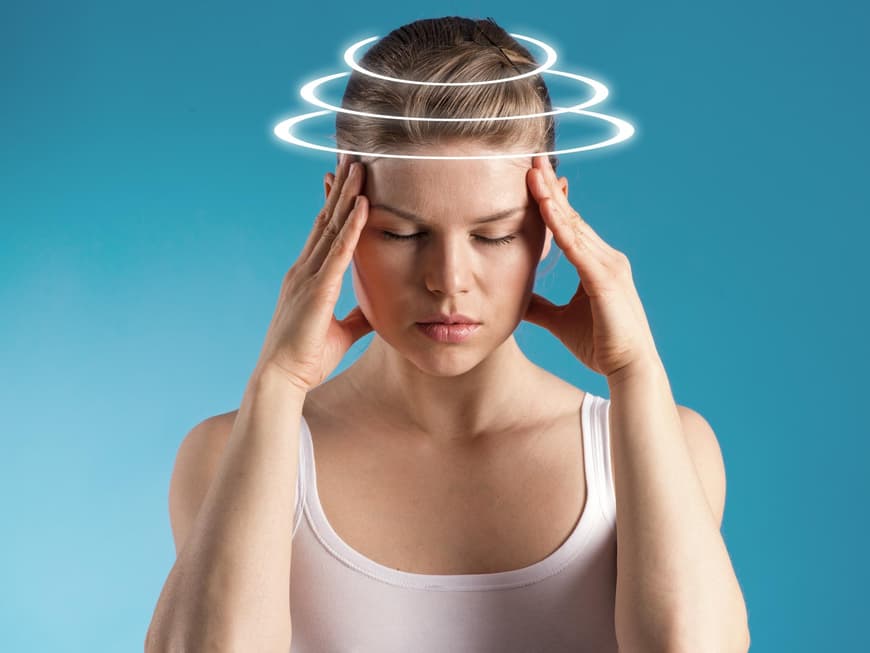
It happens from one second to the next: Those affected feel dizzy, the ground sways beneath them, everything spins, the world tilts in a different direction. Patients describe their suffering in very different ways, and the dizziness can also have very different causes. This is very important for an accurate diagnosis. The good news is that a lot can be done to combat dizziness with medication and exercises.
These are the triggers
For healthy people, balance is the most natural thing in the world. In reality, however, it is based on highly precise and complicated mechanisms involving the whole body: the sense of balance detects acceleration and analyzes the position of the body in space. A very important part of this sense is located in the vestibular organs in the inner ear, which transmit the information to the brain. The eyes, the musculoskeletal system and the skin also transmit information on spatial position to the brain. If this data contradicts itself or if stimuli cannot be processed correctly in the brain, this unpleasant feeling of staggering arises.
To the right doctor
If you suffer from this, the first thing you should do is go to your GP. The doctor will first rule out organic conditions such as cardiovascular problems or neurological diseases. If the cause is not clear, the GP will usually refer you to an ENT specialist or neurologist who specializes in dizziness. In larger cities, there are also so-called vertigo centers.
What form is it?
The doctor wants to know: Does the patient feel as if their surroundings are spinning? Or do they feel dizzy? Does the floor sway? It is also important to know how long the symptoms have been present and how long the dizziness has lasted. The duration in particular provides information about the type of dizziness. The situations in which dizziness occurs are also important. When turning your head or body? When walking in the dark or on uneven ground? When driving a car or traveling by boat?
Tests for the diagnosis
There are also tests to identify the cause. With a position test, the doctor determines whether calcium crystals from the inner ear have strayed into the semicircular canals and are causing dizziness there. A standing test, known as the Romberg test, allows conclusions to be drawn about the function of the cerebellum. Central diseases of the vestibular system such as Meniere's disease can be detected with a hearing test and tone audiogram. The semicircular canals in the ear can also be tested quickly.
Exercises can help
Physiotherapy and exercises that strengthen the sense of balance and train the brain (see right) are a good way to get rid of dizziness quickly. Medication can also help.
There are these five forms
Rotational vertigo: This often occurs when standing up. Accompanying symptoms are nausea, vomiting and ringing in the ears.
Swaying vertigo: Those affected have an unsteady gait and sway even when standing still.
Lift vertigo: The stomach jumps as if in a fast elevator. You briefly have the feeling of falling.
Phobic dizziness: You feel dizzy. The feeling usually arises in anxiety-inducing situations, for example at great heights.
Positional vertigo: Probably the most common form. The smallest calcium crystals get lost in the ear canals and are released (e.g. Vertigoheel, pharmacy).
